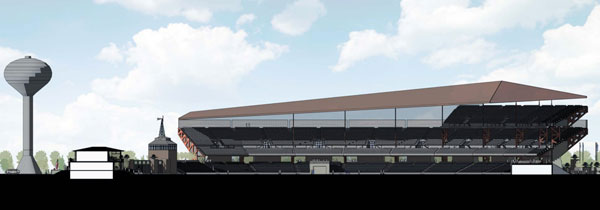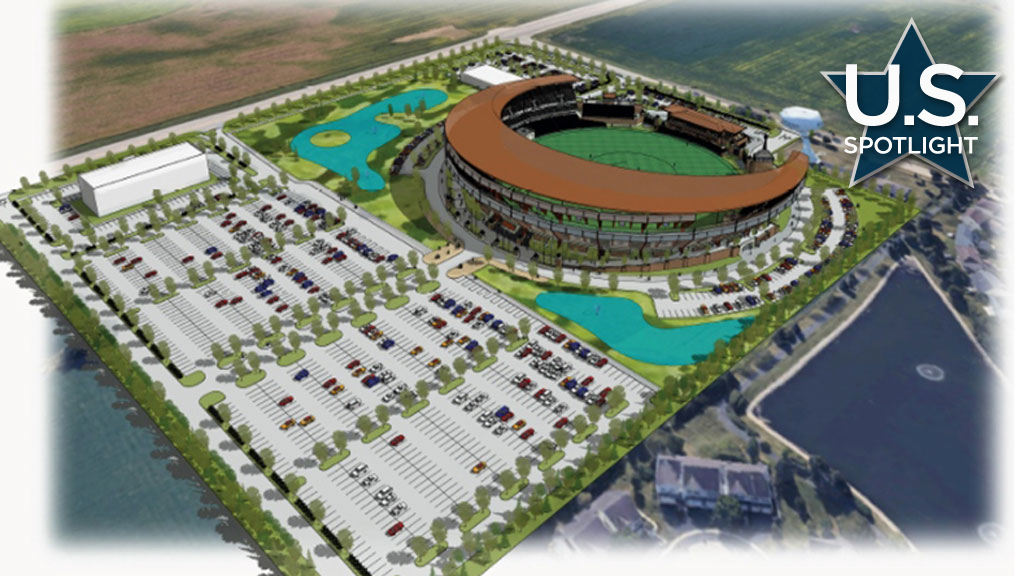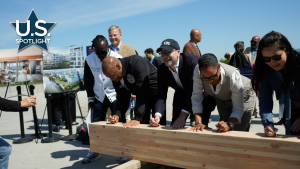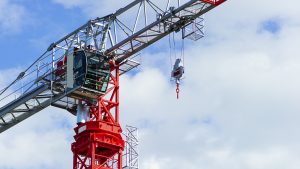Who knew that cricket was so popular in Illinois.
But an Oswego, Illinois-based businessman, a well-connected former cricket player of South African heritage, hopes the ex-urban Chicago community will become a major magnet for both amateur and professional cricket, the second most watched sport (after soccer) in the world.
The Village of Oswego, population 34,000, is about six miles southwest of Aurora and 50 miles west of downtown Chicago. It has initially approved a major cricket stadium which could grow to a 25,000-spectator capacity.
The horseshoe-shaped partially roofed facility, called Breybourne Stadium, would have three seating tiers along with parking and a hotel and restaurant. The project would be built on 34 acres of farmland and will be funded entirely by the developer, Paresh Patel of Chakra360 LLC.
The cricket site would be built cautiously in phases, partly to determine the ability to attract teams and test the waters of the popularity of the venue.
The Illinois high school sports association is investigating cricket as a high school sport. And USA Cricket, the sanctioning body for major league cricket, has identified Chicagoland as a Midwest expansion hub and professional league franchise. Further, the IOC has approved cricket for the 2028 Games in Los Angeles.

Patel couldn’t be reached for comment. But Oswego Mayor Ryan Kauffman described this as a “great opportunity” for the historic and bedroom community, not far from where Caterpillar’s manufacturing plant is located in Montgomery, Ill.
“We think it will encourage development and expansion of businesses, including restaurants, hotels and various other services to our Orchard Road (north-south) corridor,” he said. “There are several recreational leagues in the area and Paresh really wants to take that to the next level.”
The site has already been zoned for “higher intensive” development such as commercial and industrial on the “well-travelled” corridor, a municipal fact sheet says.
The stadium, designed by national architectural firm Dewberry, would in fact induce less traffic than a six or seven day a week operating industrial building, seeing that cricket would be played “off-peak” on evenings and weekends.
Design-wise the stadium profile is “Prairie style,” low to the ground, while “honoring the tradition and history” of the game.
The project would proceed in stages, beginning likely next spring with a field and wicket and underground drain tiles with interim discharge. Parking lots and club house would follow in 2024, stormwater services and spectator seating for up to 2,000.
Further stages would see as many as 800 premium seating suites, regular seating up to 6,000, expansion to 14,000 to accommodate national cricket matches and eventually the second and third tiers dependent on “future sanctioning” of cricket events.
“The phases are really determined by the economics and nothing else,” the mayor said. “If phase one is successful it moves on to phase two, if phase two is successful it moves on to phase three, etc.,” he said.
But he said the first three phases are “almost guaranteed.”
Kauffman said there are minor challenges. Some of the site is wetlands.
“I know that there is physical or engineering challenges which is why the buildings are on the part of the site that they are. But I don’t think that any of those challenges are anything that can’t be overcome or overcome relatively easily,” he said.
The mayor said community support “has been mixed.”
There has been “pushback” from some residents of the Blackberry Knoll subdivision, immediately west. This has to with traffic during cricket games and fear of overflow parking.
“They’re not strongly in support (but) generally there’s a level of excitement.”
The cricket season runs April to October, but Kauffman said facilities like the hotel and restaurant would be open year-round.
As an economic driver Kauffman hopes the stadium will draw a long-south Metra suburban train station to Oswego, a project the village “has been pursuing for many many years.”
More development is slated for the area, including a major apartment complex across Tuscany Trail bordering the stadium’s south side. But the stadium could spur major future development on its own.
“There’s plenty of undeveloped land and we believe that the Orchard Road corridor (connecting north to Aurora and I-88) is the next hot spot for commercial and residential development,” the mayor said.











Recent Comments
comments for this post are closed